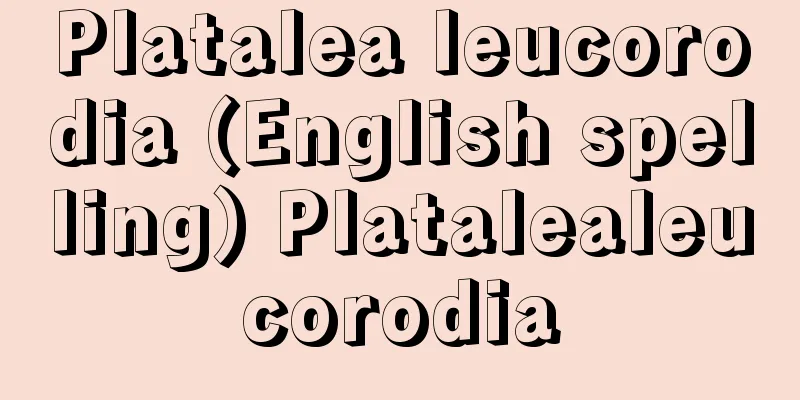Anatoliy Vasil'evich Lunacharskiy

|
Soviet art scholar, literary critic, playwright, and politician. Born in the family of a progressive government official in the city of Poltava. After graduating from a middle school in Kiev, he aspired to be a "poet and philosopher of the revolution" and went to study at the University of Zurich in 1894. He studied positivist philosophy and natural science under Professor Avenarius, an authority on empiricism-criticism, and also received instruction on Marxism and literary and artistic theory from Plekhanov, who was in exile in Switzerland. As a result, his early philosophy tended to compromise Marxism with positivism. In 1898, he returned to Russia and devoted himself to the revolutionary movement, but was arrested and exiled for more than three years. During that time, he wrote essays such as "Outline of Positive Aesthetics" (1904, renamed "Foundations of Positive Aesthetics" in 1923) and "Dialogues on Marxism, Aesthetics, and Art" (1905), which attracted attention in literary and intellectual circles. At the end of 1904, at Lenin's request, he became an editor of the Bolshevik organ newspaper. After the defeat of the First Russian Revolution, he fled to Western Europe, where he was praised as "the most gifted Bolshevik critic" for his articles "On Revolution and Art" (1906) and "Tasks of Creating Social-Democratic Art" (1907). However, during the reactionary period of Stolypin, he joined the "Khperiot" faction with Bogdanov and others, and in his book "Religion and Socialism" (1908-1911) he advocated so-called "theism," for which he was severely criticized by Lenin. Eventually, he overcame his philosophical errors and returned to Russia in the spring of 1917, rejoining the Bolsheviks. Immediately after the victory of the October Revolution, he was elected People's Commissar of Education (Minister of Education) of the Soviet government, a position he held for 12 years until 1929, during which he worked to eliminate illiteracy, simplify the Russian alphabet and implement a new "orthography," lay the foundations for a new education system, protect cultural assets, and patronize conservative or non-political scholars, intellectuals, and writers. As an art theorist and literary critic, he led the Soviet literary and artistic movement with nearly 130 books, including "Literary Silhouettes" (1923), which discussed classical Russian writers, and "A History of Western Literature" (1924), a compilation of lectures he gave at Moscow University and Sverdlovsk University, as well as 1,500 essays of various lengths, and ushered in the "Golden Age of Artistic Blossoming" after the NEP era. As a playwright, he wrote over 30 plays, including Oliver Cromwell (1920) and Don Quixote Liberated (1923), and also wrote film scripts, leaving behind numerous theories on film and theater. During the Stalin era, his activities were increasingly restricted, and in 1933 he was appointed ambassador to Spain, but died in France on the way to his post. After the criticism of Stalin, his work was positively reevaluated. [Tatsuji Minoura] "Marxist Art Theory" by A. Lunacharsky, translated by Shobo Noboru (1947, Shakai Shobo) " "Silhouettes of the Revolution" by A. Lunacharsky, translated by Teruyuki Hara (1973, Chikuma Shobo) [References] | | |Source: Shogakukan Encyclopedia Nipponica About Encyclopedia Nipponica Information | Legend |
|
旧ソ連の芸術学者、文芸批評家、劇作家、政治家。ポルタワ市の進歩的な官吏の家に生まれる。キエフ中学卒業後「革命の詩人、革命の哲学者」を志して、1894年チューリヒ大学へ留学。経験批判論の権威アベナリウス教授のもとで実証哲学と自然科学を学ぶと同時に、スイスに亡命中のプレハーノフからもマルクス主義と文学・芸術理論について教えを受ける。そのため彼の前期の哲学にはマルクス主義を実証主義で折衷しようとする傾向が生じた。1898年ロシアへ帰り、革命運動に身を投じたが逮捕され、3年余の流刑となる。その間に書き上げた論文「実証美学概論」(1904年。1923年「実証美学の基礎」と改題)、「マルクス主義と美学・芸術についての対話」(1905)などで文学・思想界から注目を浴びた。1904年末、レーニンの要請を受けボリシェビキの機関紙編集局員となる。第一次ロシア革命敗北後、西欧へ亡命、その当時発表した論文「革命と芸術について」(1906)、「社会民主主義芸術の創造の課題」(1907)で、「ボリシェビキのもっとも才能豊かな評論家」と評価された。しかしストルイピンの反動期にボグダーノフらと「フペリョート」派に移り、著書『宗教と社会主義』(1908~1911)でいわゆる「建神主義」を唱えたため、レーニンから厳しく批判される。やがて自己の哲学上の誤りを克服、1917年春ロシアへ帰り、ボリシェビキに復帰。十月革命の勝利直後、彼はソビエト政府の教育人民委員(文相)に選出され、1929年までの12年間その地位にあって、非識字者の解消、ロシア語アルファベットの簡略化と新「正書法」の施行、新教育制度の基礎づくり、文化財の保護、保守的または非政治主義的な学者・文化人・作家らの庇護(ひご)に尽力した。芸術理論家および文芸批評家としては、ロシアの古典的作家たちを論じた『文学的シルエット』(1923)や、モスクワ大学、スベドロフ大学で行った講義をまとめた『西欧文学史』(1924)など130冊近い著書、1500編に上る長短の論文をもってソ連の文学・芸術運動を指導し、ネップ時代ののちには「芸術開花の黄金時代」を迎えるに至った。劇作家としては、『オリバー・クロムウエル』(1920)、『解放されたドン・キホーテ』(1923)など30編余りの戯曲を書き、映画シナリオにも筆を染め、数多くの映画・演劇論を残した。スターリン時代に入ると彼の活動はしだいに圧迫を受け、1933年、スペイン大使を命ぜられるが、その赴任の途中フランスで客死した。スターリン批判後、彼の仕事は積極的に再評価された。 [箕浦達二] 『ルナチャールスキイ著、昇曙夢訳『マルクス主義芸術論』(1947・社会書房)』▽『A・ルナチャルスキー著、原暉之訳『革命のシルエット』(1973・筑摩書房)』 [参照項目] | | |出典 小学館 日本大百科全書(ニッポニカ)日本大百科全書(ニッポニカ)について 情報 | 凡例 |
>>: Lunar Society of Birmingham
Recommend
Hippopotamus (Hippo)
An animal of the family Hippopotamidae in the ord...
Mechanistic view of nature
...In other words, nature is objectified as an en...
River migratory fish - Kasenkaiyuugyo
…Ayu are called amphidromous fish because they ar...
Archipelago
…The Greek islands are the largest in the world, ...
Akizushima - Akizushima
...Yamato was named after the area around Mt. Miw...
Struve, GOHvon (English spelling) StruveGOHvon
...The following six people are famous as astrono...
Pereyaslav
...A city in the Kievan Rus Oblast in Ukraine. Un...
gyrfalcon
…Outside of Japan, it is widely distributed from ...
All Fool's Day
…In the West, April 1st is called All Fool's ...
《Martian Invasion》
Born in Wisconsin. Obsessed with theater, he form...
Salzburg Music Festival - Salzburger Festspiel
This music-focused festival is held every August ...
Improvement method
...In addition to the limitations of such project...
Odell, S.
…Since the 1960s, there have been various attempt...
Opuntia cactus - Opuntia
…In the early stages of growth, they have small f...
Membracidae
…It means a cicada with a horn-like protrusion on...









